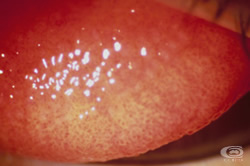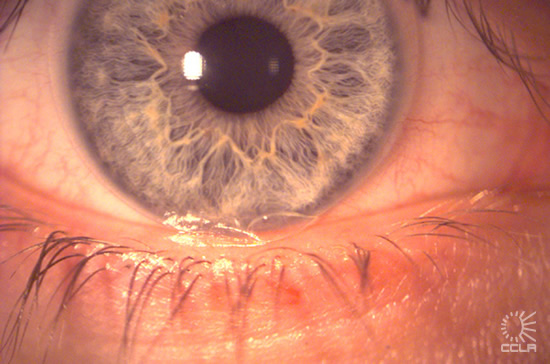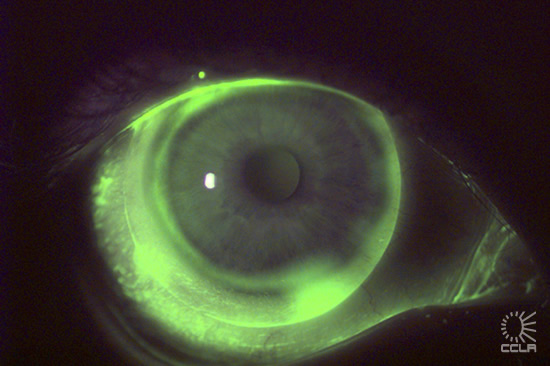|
|
| Introduction |
| Our patients have a strong desire to be free
of the need for vision correction. They complain of not being
able to see in the morning, or contact lens routines interfering
with their lifestyles, and many have considered laser surgery
to give them the 'continuous vision' they seek [1].
The new silicone hydrogel contact lenses offer continuous vision
without surgery. Now that we have lens materials available that
can overcome hypoxia and all its related problems, we need to
consider how to integrate these products into our practices and
offer this exciting development in vision correction to our patients.
Patient appreciation of these new contact lens options, and the
additional challenges of CW practice can be a very positive addition
to routine optometric practice. And of course contact lenses can
be an important part of the financial success of a practice [2,3,4].
The introduction of silicone hydrogels is likely to increase the
demand for contact lenses, and these satisfied patients can provide
additional revenue through referrals and sales of accessories.
In Part I of this editorial we will cover patient selection and
fitting with silicone hydrogels, and next month in Part II we
will address patient management, aftercare, and education.
 |
|
|
| Patient selection |
| Correct patient selection is important
to achieving successful extended wear. The selection criteria
for high Dk lens wear is very to similar to that for low Dk hydrogel
lenses. A thorough ocular and general health history is the key
to identifying the potential patient. It is also useful to remember
that the silicone hydrogel lenses can be worn for 30 nights continuously,
and or can be used as a daily wear lens, increasing the range
of suitable patients.
Refractive error: Clearly the patient must fall
within the spherical parameter range available in silicone hydrogel
lenses. At present, high Dk silicone hydrogels are currently only
available in the spherical form and therefore are not suitable
for patients with astigmatism = 1D. Previously, fitting of high
myopes and hypermetropes with lenses to be worn on an EW basis
was strongly advised against because the lens thickness profiles
further reduced the oxygen transmissibility of the already low
Dk lenses. High Dk silicone hydrogels have overcome this limitation,
and now offer the opportunity of CW to these patient groups.
General and ocular health: The physiological status
and integrity of the cornea is a most important consideration
in selecting a patient for CW. A detailed patient history and
a biomicroscopic assessment of the anterior eye and tear layer
should be done, to determine whether there are any contra-indications
to contact lens wear. For example, patients who have compromised
immunity, severe allergies or are using systemic medication should
avoid extended wear altogether. There should be no irregular corneal
distortion, and any degree of corneal staining or infiltration
must be resolved before CW commences. 
|
| |
| Unacceptable corneal staining prior to commencement
of CW |
|
| |
| Infiltrates [circled above] must have resolved before
commencing CW |
|
|
The quality of the tear layer will also be an important
factor in the success of any contact lens wear, and the practitioner
should avoid CW for patients with poor tear quality, excessive contamination
or insufficient tears. Below is a checklist of pre-fit ocular health
conditions which can be used as a guideline before prescribing CW.

|
| |
Patient history: Patient history is important
in identifying potentially problematic patients. Patients that have
had a prior history of inflammatory events or contact lens intolerance
(contact lens papillary conjunctivitis) may be at greater risk of
developing further inflammatory events. 
|
 |
 |
| Typical appearance of a patient
experiencing CLARE (Contact Lens Acute Red Eye) |
|
| Typical signs of CLPC
(Contact Lens Papillary Conjunctivitis) |
|
|
| Inflammatory events are known to recur in extended
wear [7,8] and patients should
be aware of the risk of repeat events. Given both the modulus
and surface characteristics of high Dk silicone lenses, patients
with any signs and symptoms of CLPC with previous lens wear should
not be considered as CW candidates. It is also important to beware
of patients that are problematic with daily wear of contact lenses
or that cannot maintain a 6-night extended wear schedule. Chronic
low levels of discomfort [9,10,11]
is one of the major reasons that patients discontinue from wearing
soft contact lenses. However previous success or failure with
CW is an uncertain indicator of success with the modality.
Motivational factors can also assist in the selection of the
suitable patient. The magnitude of refractive error is the most
apparent factor linked to motivation [12], however
vocational, lifestyle, recreational, and self-image factors will
also play a role.
Hygiene and compliance issues must always be addressed. While
the convenience of CW is an important motivational factor, the
desire for convenience per se is not necessarily sufficient for
fitting CW, as the desire for convenience may be linked to a propensity
for non-compliant behaviour. Non-compliance can be a major issue
in the development of contact lens complications [13,14,15]
therefore it is essential that patients are educated on the importance
of lens hygiene and correct maintenance procedures. Patients that
are non-compliant with lens maintenance solutions, hygiene and
wear schedule are at increased risk of microbial contamination
[13].  |
| Fitting |
| It is important to ensure that patients
have well fitted lenses to minimise the risk of mechanically-induced
adverse responses and to provide optimum comfort. Trial lens fitting
should always be done before the commencement of extended wear
and, if there is any problem with fit, then an alternative design
or product should be tried.
Assessment of lens fitting, following settling of the lens (10
minutes minimum), should involve evaluation of optimal centration,
corneal coverage and lens movement. Ideally, high Dk silicone
hydrogel lenses should be slightly loose (45-50% tightness) when
assessed with a push-up test [16], with 0.2
to 0.3 mm movement and good limbal coverage in all gaze positions.
Silicone hydrogels move more that most other spherical soft lenses.
The main aim is to maximise lens movement to achieve increased
tear exchange. Lenses that are too loose can cause discomfort
and lens awareness, and lenses that are too tight will prevent
adequate tear exchange. This tear exchange is not for the purpose
of oxygenation, but to encourage the removal of debris and bacteria
from under the lens. It is generally considered good practice
to fit CW lenses as mobile as possible, but there should be no
compromise in comfort.
In a comparison of the percentage of unsuccessful fits in patients
with high Dk silicone hydrogel lenses (n = 190) to those with
conventional low Dk lenses (n = 115), we found that there was
no difference in the percentage of patients who could not be fitted
with lenses (4 and 5%, respectively) but that the cause of unsuccessful
fits was different [5]. The primary reason for
ill-fitting low Dk soft contact lenses was insufficient coverage
of the limbus and decentration whereas lens 'fluting' was the
primary cause of ill-fitting lenses with high Dk patients. Lens
fluting is a buckling of the lens edge due to excessive edge lift,
which occurs intermittently and can be detected by observing the
lens edge move over the temporal limbal area near the lower lid.
 |
 |
| Fluting at 5.30 o'clock as observed with white light |
|
|
| Instillation of fluorescein or flurexon may assist
in the observation and will also indicate any bearing zones. |
 |
| Fluting at 5 o'clock easily observed with flurexon
using
cobalt blue light source and Wratten filter. |
|
|
Lens fluting will not decrease with wear and will cause
discomfort. Therefore if fluting or edge lift occurs, the trial
lens should be considered unacceptable. There is no period of adaptation
with silicone hydrogel lenses, therefore comfort should be optimised
at the first fitting. 
|
|
|
| Wear Schedules |
| We recommend that if a patient is
new to lens wear, then they should undergo a short period (minimum
of 1 week) of adaptation to high Dk lenses on a daily wear schedule.
The patient should be completely comfortable with lens handling
and care procedures before they move into CW. If there are no
problems, the patient should then commence extended wear. The
patient should wear the lenses for one night and then come in
for a check; and proceed to 6 nights wear then come in for a second
check; before starting 30-night continuous wear. This not only
gives the patient time to become accustomed to lens wear, but
also allows the practitioner to assess the response of the eye
to the silicone hydrogel material. Experienced lens wearers with
no history of ocular complications can commence extended wear
with high Dk lenses immediately.
Although high Dk silicone hydrogel lenses are designed for up
to 30 nights of extended wear, patients and practitioners should
be encouraged to have a flexible attitude to lens wear schedules.
Lenses can be worn continuously for any length of time up to 30
nights. Patients should be encouraged to remove their lenses as
often as is thought necessary, particularly if they are unwell.
Lenses that are removed temporarily should be rinsed or cleaned
before reinsertion and lenses that are removed overnight or for
any significant period of time should be disinfected before they
are reinserted. Practitioners should ensure that patients do not
use their lens hygiene and maintenance solutions beyond their
expiry date.
Aftercare regimes will be discussed in more detail in Part 2
of this editorial, however it is important that patients new to
high Dk should be seen after the first night of wear, then after
the first week, first month, at 3 months, and every 3 months thereafter.
 |
| Conclusion |
Patient selection which takes into account
health, personality and circumstances; and lens fitting to ensure
maximum comfort and minimum lens effects on the eye, will help to
ensure the future success of continuous wear. Awareness of these
factors will make it easy for practitioners to add the benefits
of CW to their practice, and to provide their patients with the
'continuous' vision they seek.  |
| References |
| [1] Vision Cooperative Research Centre (VisionCRC) studies
2000
[2] Ziegler D (1997): Maintaining profitability
in these competitive times. Cont Lens Spectrum 12: 29-32
[3] Barr J (1998): The 1997 annual report on contact
lenses. Cont Lens Spectrum 13: 23-33
[4] Marrioneaux S, Gwin N (1998): The golden opportunity
in contact lenses. Cont Lens Spectrum 13: 27-32
[5] Sweeney DF (editor): Silicone Hydrogels: The
rebirth of continuous wear contact lenses. Butterworth-Heinemann,
Oxford, 2000
[6] Norn MS (1972): Vital staining of cornea and
conjunctiva. Cont Lens J 3: 19-22
[7] Bates AK, Morris RJ, Stapleton F, Minassian
DC, Dart JKG (1989): Sterile infiltrates in contact lens wearers.
Eye 3: 803-810
[8] Sweeney DF, Grant T, Chong MS, Fleming C,
Wong R, Holden BA (1993): Recurrence and acute inflammatory conditions
with hydrogel extended wear. Invest Ophthalmol Vis Sci 34: S1008
[9] Cox N (1985): Contact lens drop outs. J Br
Contact Lens Assoc. 8: 6-10
[10] Weed KH, Fonn D, Potvin R (1993): Discontinuation
from contact lens wear. Optom Vis Sci 70: S140
[11] Fonn D, Pritchard N, Brazeau D, Michaud
L (1995): Discontinuation of contact lens wear: The numbers, reasons
and patient profiles. Invest Ophthalmol Vis Sci 36: S312
[12] Efron N, Brennan N, Sek B (1988): Wearing
patterns with HEMA contact lenses. Int Cont Lens Clin. 15: 344-350
[13] Bowden FW, Cohen EJ, Arentsen JJ, Laidson
PR (1989): Patterns of lens care practices and lens product contamination
in contact lens microbial keratitis. CLAO J 15: 49-54
[14] Ky W, Scherick K, Stenson S (1998): Clinical
survey of lens care in contact lens patients. CLAO J 24: 216-219
[15] Gower LA, Stein JM, Turner FD (1994): Compliance:
A comparison of three lens care systems. Optom Vis Sci. 71: 629-634
[16] Young G, Holden BA, Cooke G (1993): Influence
of soft contact lens design on clinical performance. Optom Vis
Sci 70: 394-403  |
|